David Sedaris is a bestselling American humorist and essay writer.
But that doesn’t necessarily mean his MasterClass will be right for you.
In fact, there are some people this course is definitely less suited to.
So, in this David Sedaris MasterClass review, I’ll look into whether this course is worth the money, how unique the content is, who it’s suited to, and what other options are available.
Firstly, here’s an overview:
.
Quick Summary
You’ll learn how to:
- Find and use humorous material for essays and speeches
- Mine your everyday life to develop creative and funny stories
- Develop your skills as a writer and observer of the world
- Ask better questions to elicit interesting responses
- Deal with sensitive subjects and writing about loved ones
- Connect to your reader through anecdotes and emotion
- Make your work more authentically “you”
Pros
- Rare chance to learn from David Sedaris himself
- Unique course covering niche subject areas
- Applicable tips to help you become funnier
- Excellent advice on improving your conversational skills
Cons
- Biased advice (based on Sedaris’ own preferences)
- Feels more conversational (as opposed to teaching)
- Less clearly defined lesson objectives compared to other classes
Length of course: 3 hours, 37 minutes long.
Best for: Writers keen to develop their conversational style when it comes to writing non-fiction/humorist pieces. Less suited to those expecting clear-cut lessons and step-by-step writing guides.
Overall: A chance to learn from Sedaris’ unique perspective on writing humorous essays and observational pieces. This course largely centers on how to become a better observer and turn “incidents” into compelling stories (view details).
Here’s what this David Sedaris MasterClass review will cover:
- About David Sedaris
- About MasterClass
- A sneak peek of what’s included
- Pros and cons
- Who it’s for
- How much it costs
- Is there anything better?
- What others thought of this course
- How unique the content is
- The final verdict: is it worth the money?
So, let’s get started:
About David Sedaris
If you’re reading this David Sedaris MasterClass review, you likely have some idea of who the man is and what he’s known for. With that in mind, I’ll spare you the biography and instead sum up some key career points:
- Sedaris achieved success as an essayist and humorous non-fiction writer with Barrel Fever, published in 1994
- Since then, his subsequent five essay collections all became New York Times Best Sellers, and his 2000 book, Me Talk Pretty One Day, won him the Thurber Prize for American humor
- He has also collaborated on a number of plays with his sister, Amy, under the name “The Talent Family”
About MasterClass
Established in 2015 by Yankee Industries, MasterClass is an e-learning platform that offers courses led by celebrity experts.
At the time of writing, there are over 80 video courses all taught by major names in their fields.
For example, you can learn Comedy from Steve Martin, Writing from Neil Gaiman, and even Cooking from Gordon Ramsay.
MasterClass has gradually risen to the top of online learning. This is no surprise given its unrivalled production values and high quality videos.
At the same time, and having taken many MasterClasses myself, I can say that the platform isn’t for everyone.
So, in this David Sedaris MasterClass review, I’ll weigh up the pros and cons to help you decide whether this course is for you.
If you’re after a quick peek of the class content, it’s worth checking out the MasterClass trailer:
An Inside Look Into David Sedaris’ MasterClass
David Sedaris’ MasterClass is 3 hours, 37 minutes long and consists of 14 video lessons. Alongside this, you also get a 38-page Workbook complete with:
- A full bibliography
- Recommended reading and listening
- Assignments for further learning
- Excerpts from Sedaris’ work
The Workbook is a nice addition to the video content, especially if you’re someone who likes to take notes as they go. The PDF can be printed and revisited as often as you’d like.
Sedaris’ MasterClass is split into 4 sections:
- Meet Your Instructor
- Finding and Using Material
- Beginning, Revising, and Ending a Story
- Developing as a Writer
To give you a better idea of whether this course is for you, I’ll share with you the highlights of each lesson:
Section 1/4: Meet Your Instructor
Introduction

In this section, Sedaris lays down his objectives for this MasterClass. In particular, he tells you his aims for making you realize that “everyone has an interesting story to tell.”
Helpfully, Sedaris also gives you some personal/career background, including what he wants to achieve through his writing and what he considers to be his central themes.
Overall, this section helps you to understand Sedaris’ writing goals as well as his rituals for success.
You’ll learn how to:
- Celebrate both your successes and failures as a writer
- Mine the world for subject matter and ideas
- Fit a writing ritual into your everyday life
- Get laughs from your audience and generally be funnier
This lesson was a nice way of framing the MasterClass and setting down Sedaris’ beliefs that everyone is capable of writing humor.
He shares some helpful snippets that he’ll expand on later in the class, including how to be more attentive to the world around you and to evaluate your stories.
Section 2/4: Finding and Using Material
Observing the World
“If you’re attuned to the world, everything feels like a story”
This class teaches you how to:
- Tune in to the world around you to get the best material
- Ask better questions to elicit interesting responses
- Increase your chances of gaining better experiences
- Let stories develop by letting them play out
In this section, Sedaris proves to have an interesting way of looking at the world around him. He encourages you to tilt your perspective on the world and approach your daily life in a way that inspires the best stories.
Sedaris teaches you not only how to observe people but how to interact with them to elicit more compelling “incidents.” These can develop from asking seemingly random questions of those around you that can lead to interesting stories.
As he puts it, Sedaris lets people “expose” their true selves around him in order to gain the best observation to develop into stories.
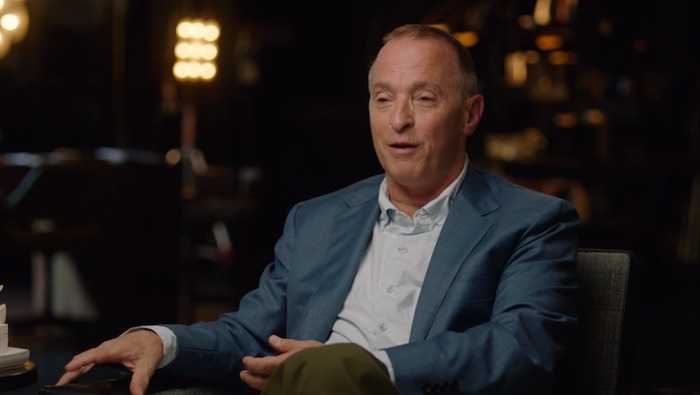
Turning Observations Into Stories
“You just have to do the work”
In this section, Sedaris shares his daily writing routine, with a specific focus on his diary entries and essays.
He teaches you:
- How to fit writing into your everyday life
- The importance of writing every single day
- What counts as work and what doesn’t
- How to increase your productivity
This chapter focuses on diary entries as a form of storytelling and how you can “mine” your extracts to find worthwhile material.
A key takeaway from this lesson, which becomes a running point throughout the course, is Sedaris’ distinction between “moments” and “stories.” Much of the course from this point forward focuses on how to turn one into the other.
Kitchen Sink Stories: Live in Cleveland
This section breaks from Sedaris’ introductory lessons by showing you recorded footage of Sedaris live in Cleveland. In the video, he reads his “Kitchen Sink Stories” to a live audience.
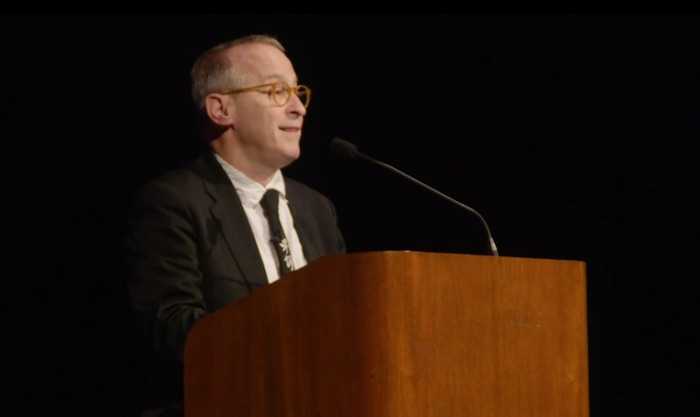
As well as seeing how David Sedaris performs in front of a crowd, you also get to hear his exclusive commentary over the video (as well as behind-the-scenes interviews from his book tour).
Not being overly familiar with Sedaris’ work, I found this section interesting in terms of how “meta” his work really is. In fact, he goes into great detail about how his work developed over the course of his book tour, and how it ultimately influenced later drafts of his work.
Personally, I thought this was a great way for writers interested in performing to see how their work could hold up against a live audience, and how to recognize when adjustments are needed.
Writing About Loved Ones
“I don’t see the value in a clean show”
Here, David Sedaris elaborates on one of the elements most associated with his work: writing about loved ones. Covering some sensitive subjects, he teaches you how to strike a “balancing act” when it comes to writing about family and maintaining privacy.
You’ll learn how to:
- Mine your family for incidents and stories
- Celebrate your subjects without exploiting them
- Handle sensitivity and controversial subjects
- Make yourself more relatable to your reader
This section includes a 1-1 conversation between Sedaris and one of his sisters, Lisa. They discuss the impact of David’s writing on the family and how to steer clear of oversharing.
While I found this lesson less educational than most of the others, it was insightful in terms of understanding the Sedaris’ family dynamic and what makes the family such interesting subjects for Sedaris’ essays.
Section 3/4: Beginning, Revising, and Ending a Story
Breaking Into a Story
“Find a way in”
In terms of specific writing techniques, I found this lesson the most helpful and informative. Here, Sedaris shares some examples of his early drafts and what he likes/dislikes in an opening.
He focuses on topic sentences and how to “unlearn” the structures you’re taught in school. In fact, Sedaris puts particular value on the “knocking” process, which he uses in many of his essays to throw the reader off guard.
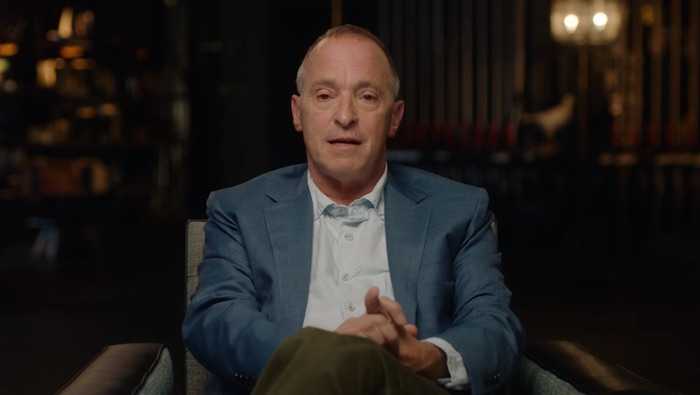
He considers his career on national radio, and how this influenced his writing style. As he puts it, your opening is going to determine your whole essay – so you need to make it original – and funny.
My favorite part of this lesson was hearing Sedaris read over several drafts of his essay, Understanding Owls. This close reading is valuable for seeing what Sedaris chose to tweak (and why) in order to get to the final version published in The New Yorker.
Connecting to Your Reader
“You can’t write humor and not be able to laugh at yourself. It’s not fair”
In this section, Sedaris focuses on how to make yourself more relatable to your reader.
Here are my main takeaways:
- How to gauge readers’ expectations and reactions
- The importance of keeping the “laugh” secondary
- How to notice your reactions in a live setting
- The difference between writing vs. speaking
- How to increase relatability by laughing at yourself
Overall, Sedaris uses this section to focus on connecting to a live audience vs. a reader. He notes the distinctions between the two and shares some common/different attributes that can help you succeed at both.
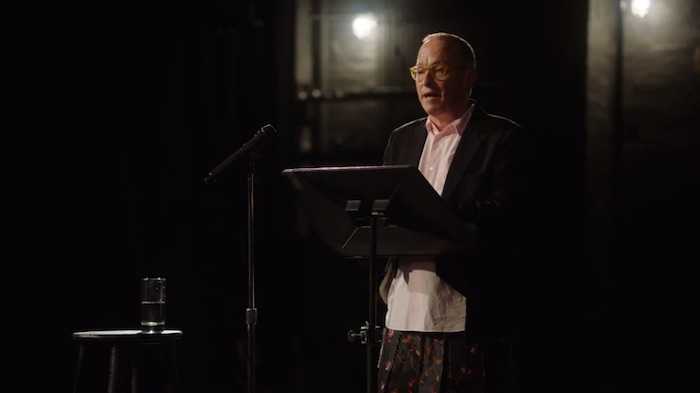
Ending with Weight
“Turn the end around”
Like a story’s opening, Sedaris suggests, the ending must also be equally impactful. In fact, the ending brings the story full circle and ties up any loose ends.
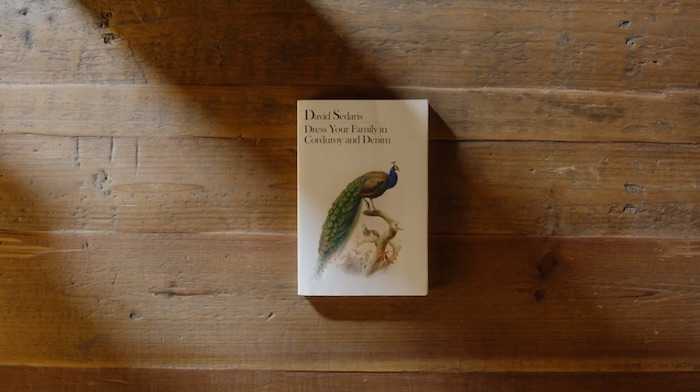
With this in mind, this class covers the following:
- Sedaris’ influences in terms of story endings
- How to workshop your ending to a satisfying conclusion
- The importance of ending with “truth”
Taking an example from “The Spirit World,” Sedaris demonstrates how he brings a story to a gratifying end and elicits an emotional reaction from his reader.
Paired with the live reading of “The Spirit World” at the end of the course, this extract was helpful for anyone looking for a concrete example of how to write an ending.
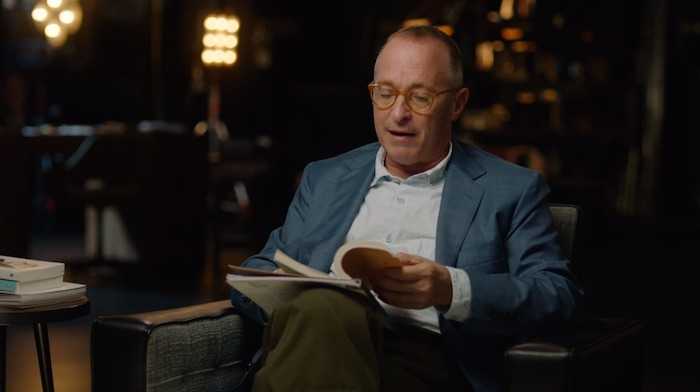
Revision Philosophy
“Writing is rewriting”
Having taken several writing courses on MasterClass, the idea of editing as rewriting wasn’t particularly new to me. However, I always find it valuable to hear other writers’ perspectives on the revising process, and I find that I always leave with something new.
In this chapter, you’ll learn how to:
- Develop a collaborative relationship with your editor
- Read your own work critically and constructively
- “Cut” your work with techniques Sedaris learned from radio
- Edit your stories while protecting the humor
This section was an enjoyable watch as it shed some new light on the editing process for me. Mainly, hearing about Sedaris’ radio experience offered an interesting perspective on how speaking aloud can help to improve your writing.
Knowing Sedaris’ long career with The New Yorker, I was also eager to learn some of the secrets that have clearly led to his success.
Story Evolution: “Active Shooter”
With reference to his New Yorker essay, “Active Shooter,” Sedaris teaches you how to:
- Build and follow a story through to the end
- Use diaries and openings as your starting points
- Give your audience some release
Similarly to previous chapters, Sedaris reinforces his methods on how to build a story from initial idea to final execution. At the same time, he also shares some tips on how to provide your audience with “release” throughout the piece.
Sedaris takes you through several drafts of his essay, noting significant changes and his reasons for making them.
While this was an interesting chapter in terms of structure, I actually found this lesson quite difficult to follow, and I don’t think it was entirely clear what the lesson objectives were.
Bonus Reading: “The Spirit World”
This bonus chapter features a live reading from Sedaris’ 2018 publication, Calypso. In particular, you get to hear an extended reading of the essay, “The Spirit World,” which Sedaris also covers earlier in the course.
While I’ve noted this lesson’s value in showing you Sedaris’ live performance style, I did find it slightly repetitive as Sedaris gives you a “1-1” reading of the same extract in a previous lesson.
Unless you’re watching it as a fan of Sedaris’ alone, I don’t think this section has much educational merit and I didn’t find that it added anything to his teaching.
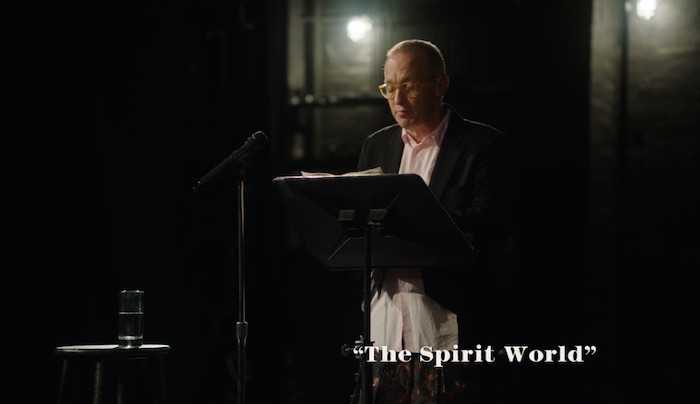
Section 4/4: Developing as a Writer
Growing as a Writer
“Trust that people will help”
This lesson teaches you how to grow as a writer through making the most of opportunities.
For me, the key takeaways were on how to:
- Use events as a way to network and gain experience
- Keep in the habit of writing new and unique material
- Celebrate your success while staying grateful
- Treat those around you and let help come to you
I found this lesson to be one of the most practical and easily-applicable in the whole course. Sedaris gives you some no-nonsense advice on how to improve your chances of success and develop as a writer.
With this in mind, he continues to elaborate on his own influences:
David’s Influences
As Sedaris states, “read writers who make it seem possible.” For him, the best influences were never the most complicated writers but those who made writing seem like a viable career for anyone.
Here, he takes you through some of the writers and books that made an impression on him, and inspired him to write for himself.
As well as giving you some recommended reading, this is an insightful chapter for anyone interested in how Sedaris went from a non-reader to a self-educated bookworm.
He takes you through the writers who encouraged him to follow in their footsteps, after initially wanting to be a “visual artist.”
Conclusion: Two Types of People

“Let the world take care of the publishing for you”
Sedaris concludes his MasterClass by sharing his philosophy on “the two types of people” in the world. He offers his opinion on which category he falls into and how he worked through his shortcomings to become the disciplined writer he is today.
Like most MasterClasses, this conclusion is akin to a sort of “pep talk,” where the teacher leaves the student with a sense of motivation. That being said, I felt that Sedaris’ own experiences were likely out of touch with most of his viewers’.
For example, he shares his own fortune in getting recommended to a publisher rather than having to reach out himself. He also reiterates that he never worked to get his writing out there – but, rather, others did the work for him.
This slightly dampened this chapter’s impact for me, as I felt Sedaris’ viewers were looking for more practical tips on how to get their work out there. At the same time, I think Sedaris’ MasterClass does have its merits when it comes to sharing advice on sticking to routines and becoming more disciplined. As he noted at the beginning of the class, everyone’s life has value and everyone has the potential to tell great stories.
What I Liked About David Sedaris' MasterClass
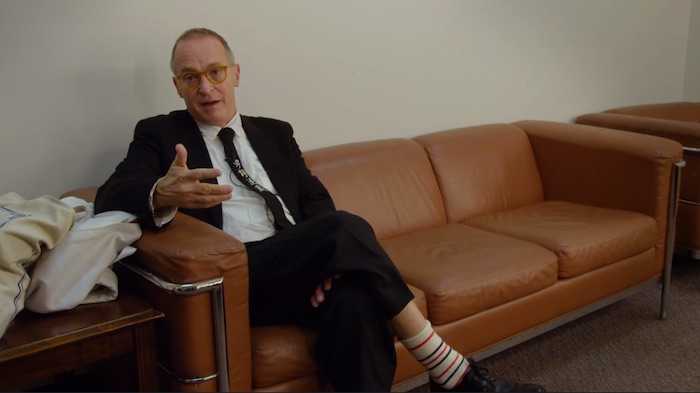
Learn from David Sedaris
With his acclaimed status as a New York Times best-selling writer, it goes without saying that this MasterClass is a great opportunity to learn from the best.
You get over 3 hours of video content, which is as close as many would get to a “1-1” learning experience from Sedaris.
If you’re willing to pay the course fee, you’re granted unrivalled access to some of Sedaris’ best-kept writing tips.
Unique Course Content
Even as a writing course on MasterClass, I’d say Sedaris’ class is fairly unique. Unlike most other writers (such as Neil Gaiman and Maragret Atwood), Sedaris’ writing is mostly non-fictional, autobiographical, and written in essay form.
When weighing up different class options, I struggled to find one that was remotely similar to Sedaris’ unique subject areas. As such an eccentric character, it’s hard to find anything that compares to Sedaris’ course content.
If you’re looking for a writing course that takes you outside the box, this is definitely a contender. Sedaris dismisses a lot of the advice you were probably taught in school and instead offers his individual perspective on humorous writing.
It’s also interesting to note Sedaris’ upbringing as a child mostly disinterested in reading. Hearing Sedaris’ background was a breath of fresh air amongst writers who were clearly avid book-readers from a young age.
Great Advice on Improving Conversations
Coming to this course as a newcomer to David Sedaris, one of the qualities that struck me most about him was his perceptiveness when it came to people. In fact, much of his writing involves telling intimate and revealing stories about others.
Because of this, a great deal of his advice revolves around developing communication skills, “reading” people, and asking better questions to take you down interesting roads. This, he says, is crucial for developing interesting stories that people will want to read.
What I Think Could Improve
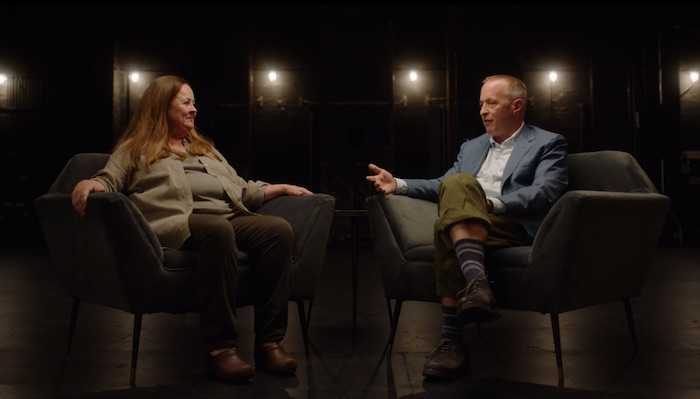
Heavily Biased Advice
Although inevitable when learning from one teacher, Sedaris’ MasterClass is notably an insight into how he thinks and writes.
While Sedaris qualifies his advice as a matter of opinion, he does firmly assert what he believes to be good and bad writing. In fact, in one section, he even reveals what should and shouldn’t count as writing at all.
Because of his tendency to tell stories about his own life and family, I’d say this course is most suited to those looking to do the same. Sedaris delves into the pros and cons of writing about real-life figures – especially ones in your immediate circle.
If you’re not so interested in writing non-fiction (or, specifically, autobiographical) writing, there are quite a few lessons that will be less valuable to you.
Conversational Rather Than Lecture-Based
Sedaris is, as one viewer notes, “a great conversationalist.” But, it’s worth bearing in mind that his teaching style is more conversational than it is lecture-based.
At times, it feels as though Sedaris is talking to you about his own background rather than giving you any concrete advice. With this in mind, this course might not appeal to those who prefer more lecture-based learning.
Overall, because his style of writing is so specific and personal, it feels as though Sedaris isn’t really giving you any solid advice. Instead, he’s sharing his own opinions and discussing what works for him. He steers away from a “one way fits all” mentality.
Unclear Lesson Objectives
As mentioned, Sedaris’ teaching style is a lot less structured than, say, David Mamet’s. Sedaris doesn’t profess to be a teacher or to even be a natural writer.
His MasterClass feels more like an insight into his work “behind-the-scenes,” as he takes us through numerous drafts and shares his writing rituals.
Because of this, I didn’t come away from every lesson with a clear sense of what I learned. This course certainly isn’t a step-by-step guide on how to write, and the lessons are less clearly defined than in other courses.
Who Is the Course For?
In my opinion, the David Sedaris MasterClass is most suited to someone who is:
- Interested in autobiographical writing and humorous nonfiction
- Keen to learn from a renowned essayist and contributor to The New Yorker
- Looking for a course that covers less conventional forms of writing
- Wanting to write shorter, more anecdotal pieces
- A fan of David Sedaris and humorist writing in general
The class is best suited to those who are interested in humorist writing – particularly in the form of essays. You’ll learn how to develop a story from an incident, revise your drafts, and get your audience invested in your words.
If you’re not interested in humorist writing, or crafting stories from your own life, I’d say this course is less relevant for your needs.
How Much Does the Course Cost?
MasterClass pricing may have changed since this review was written, so for the latest purchasing information please check here.
Currently, MasterClass has three subscription offers. The price for these (per month) are:
- Individual (1 user): $10
- Duo (2 users): $15
- Family (6 users): $20
All are billed annually, which may seem a little pricey at first glance.
That being said, the value for money comes from taking as many courses as possible.
With 200+ courses on MasterClass, you’re bound to find many that interest you. But, even if you find that only 10% of the courses interest you, this still works out at $6 per course.
And, if you join with friends or family, the cost for each course is drastically reduced. Check out our MasterClass review or MasterClass cost articles to see how.
Bearing in mind that these courses are taught by leading experts, the value for money is unbeatable. Elsewhere, you can pay over $100 for a course taught by someone you’ve never heard of, and it would nowhere near match the caliber of teaching on MasterClass.
Besides, MasterClass offers a 30-day refund policy if you’re not happy with your purchase.
You can also purchase MasterClass as a gift.
Is There Anything Better Than the David Sedaris MasterClass?
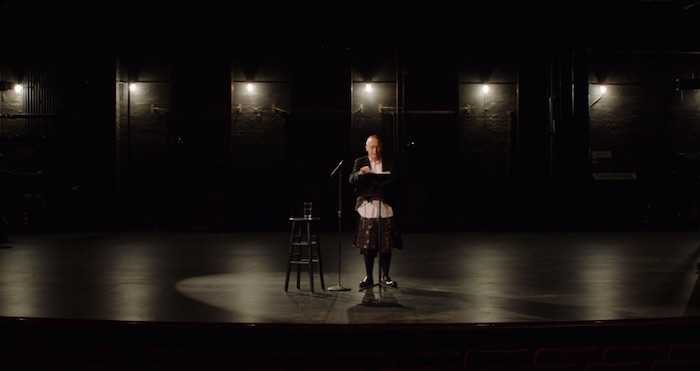
Luckily, there’s no shortage of online courses in this day and age.
MasterClass currently has the following classes available in the storytelling category:
- Dan Brown – Writing Thrillers
- R. L. Stine – Writing for Young Audiences
- Malcolm Gladwell – Writing
- Judy Blume – Writing
- Shonda Rhimes – Writing for Television
- James Patterson – Writing
- Margaret Atwood – Creative Writing
- Amy Tan — Fiction Writing
- David Mamet – Dramatic Writing
- Billy Collins – Reading and Writing Poetry
- David Baldacci – Mystery and Thriller Writing
- Neil Gaiman – The Art of Storytelling
- Amanda Gorman — Poetry
- Joyce Carol Oates – The Art of the Short Story
- Walter Mosley – Fiction and Storytelling
- Roxane Gay — Writing for Social Change
- Salman Rushdie – Storytelling and Writing
- N. K. Jemisin – Fantasy and Science Fiction
Outside of MasterClass, one alternative is the “Humor Writing” course on Udemy. Although this is slightly cheaper than the David Sedaris course, the difference is marginal, and it’s actually significantly shorter than this class.
In fact, I’d say the production values (and celebrity tutelage) more than justify the MasterClass fees. If you’re serious about writing, you even have the benefit of other famous writers to learn from, such as Judy Blume and Dan Brown.
The verdict?
MasterClass allows you to learn from some of the best writers in the business. And, if you opt for the all-access pass, you can mix and match courses in order to get an unrivalled learning experience.
David Sedaris MasterClass: What Others Have Said
My aim here is to present the most fair and balanced review of David Sedaris’ MasterClass. So, it’s worth drawing attention to other people’s experience of the course – both good and bad.
I searched Reddit and similar forums as well as MasterClass itself to get a general sense. Many users seemed divided about the course content, and even noted its lack of structure.
“I have to say that I enjoyed pretty much the first five chapters of this class. From chapter 6 to chapter 12 I felt Mr. Sedaris was talking to his psychologist, so I did not take many notes as I did in previous chapters. In general, I give it 6/10.”
Another user agreed the course wasn’t anything mind-blowing and alludes to Sedaris’ apparent luck as a writer:
“I agree that there are better MasterClass courses for writers out there. Part may be David’s atypical experience as an author. He’s published 20+ million books but never had to send a query letter. He sees no value in writing something he can’t read on stage. He’s as much a performer as he is an author.”
Overall, the general consensus seems to be that Sedaris’ course is less in touch with its audience expectations. The comments are right in pointing out that Sedaris doesn’t give any practical advice on how to send a query letter or contact agents. He even advises you to “let the world take care of the publishing part.”
That being said, the course wasn’t entirely poorly received. In fact, some found the class to have great value as both education and entertainment.
“I just finished his MasterClass and absolutely loved it. I found that he’s full of helpful writing tips, and he’s also just a “great hang.” I got a MasterClass pass to the entire site as a gift, so I’ve dipped my toes into a few of the courses. However, I haven’t finished any of them besides David’s. I sort of pick-and-choose segments from other teacher’s lectures, but David is such a wonderful conversationalist. Plus, he's hilarious and he’s opinionated and wickedly dark. He really opens up about who he is, and he genuinely wants to help people who want to be good writers.”
All in all, most users seemed to have a love-hate relationship with the course. At times, it definitely feels that Sedaris is simply sharing stories about his life. But I also think this is a large part of his teaching style.
The bottom line is:
Sedaris has a unique way of taking you through his MasterClass, and it’s largely led by anecdotes. If you’re already a fan of Sedaris or his type of work, I’d say this course has its value. But, if you’re on the fence, I’d say it’s worth checking out some other options first.
Is the Course Content Unique?
Honestly, the David Sedaris MasterClass isn’t completely unique.
In fact, YouTube already has some clips dedicated to Sedaris’ writing tips, though it’s worth noting that these are only a few minutes’ long. As well as this, Sedaris has several podcasts and live readings available to listen to.
That being said, the MasterClass format is a unique venture for Sedaris. You gain detailed insight into his writing process that I struggled to find from other sources. There’s also the exclusive interview with Lisa Sedaris and a bonus reading from his book tour.
So, you’re unlikely to find other sources where Sedaris discusses his craft in so much depth. At the same time, he’s taken part in many interviews (including one in The New Yorker) where he discusses some of the writing tips given in the course.
Overall, I think it’s worth considering the lesson plan to decide whether this course is worth the purchase.
Verdict: Is the David Sedaris MasterClass Worth It?
If you’re a die-hard fan of David Sedaris, and/or want to develop your skills in humorist writing, I’d say this course is worth it. While it isn’t the longest writing course on the website, it does have substantial lessons dedicated to a specific type of writing that you’re unlikely to find elsewhere.
However, if you’re unfamiliar with Sedaris or are unsure whether his style is for you, I think it’s definitely worth checking out some other MasterClass trailers or even considering the all-access pass.
Sedaris offers some unique insight into how to mine your own life and observations for funny stories and even teaches you how to find humor in everyday situations. If you’re more interested in serious genre writing or fiction, though, I’d advise that this course probably isn’t for you.
Overall:
If you like David Sedaris and his style of writing, this MasterClass is a worthy investment. He certainly has a unique way of looking at the world and using it for his work.
Either way, it’s definitely worth looking at the other writing courses MasterClass has on offer. These can offer an alternative to Sedaris’ course or even serve to complement it.
If you’re looking for a value-for-money option, the all-access pass allows you to take all MasterClasses across a yearly subscription.
Frequently Asked Questions
A MasterClass all-access-pass costs $120 a year ($10 a month). This gives you access to David Sedaris' MasterClass, alongside 200+ other courses.
The David Sedaris MasterClass is 3.5 hours’ long and consists of 14 lessons.
No, you can’t get the David Sedaris MasterClass free. But, MasterClass has a range of purchasing options and a 30-day refund policy if you’re unhappy with your choice.
Yes, MasterClass has a 30 day refund policy if you purchase directly through them. But, if you purchase through other providers, their refund policy might apply.

Rebecca graduated from King's College university with a first class honours in English Language, followed by a Masters' Degree in Eighteenth Century Studies.



This article was very helpful. Thank you for all the good information.
Impressive review. Thanks so much. I’m a Sedaris fan but that doesn’t mean the course would be a good fit for me; however, after reading this, I think I will give it a try.
Again, impressive & useful review.
Thanks so much for the feedback Barbara, I hope if you do the course you enjoy it. MasterClass is now available for only $10 so it’s an even better investment!
Hi there! I know this is kinda off topic however I’d figured I’d ask.
Would you be interested in trading links or maybe guest
writing a blog article or vice-versa? My blog goes over a lot of
the same topics as yours and I think we could greatly benefit from each other.
If you’re interested feel free to shoot me an email. I look forward to hearing from you!
Awesome blog by the way!
Thanks for reaching out and for your kind words about our blog — I really appreciate it! Your collaboration idea sounds interesting. I’d love to learn more about your blog, its audience, and the type of content you typically cover.
Real superb visual appeal on this site, I’d value it 10 10.
Thank you! 🙂
whoah this blog is excellent i love reading your articles. Keep up the good work! You know, a lot of people are looking around for this information, you could aid them greatly.
Thank you so much! I’m really glad you enjoy the articles. It means a lot to know that the content is helpful to others. I’ll definitely keep sharing valuable insights—appreciate your support! 😊